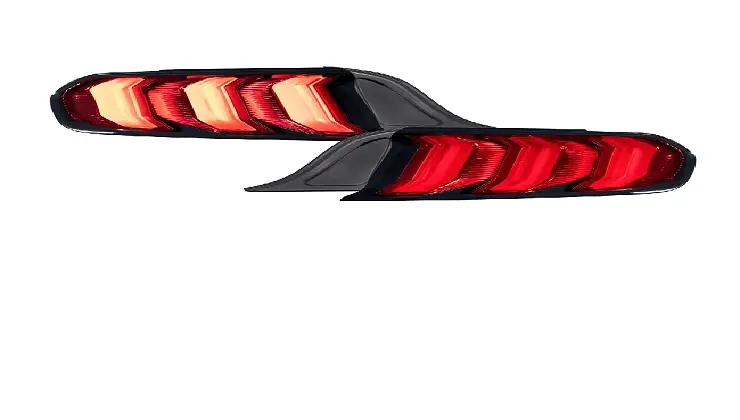If you are in the automotive industry, you are probably familiar with the term torque. Torque refers to the force that is used to rotate an object, such as a nut or bolt. In many cases, the use of an extension is necessary to reach the area where the torque is needed. However, the use of an extension can result in a loss of torque, which can impact the effectiveness of your work.
In this article, we will explore how much torque is lost through an extension.
Contents
Introduction to torque and extensions
Before we dive into the specifics of torque loss through extensions, it’s important to understand what torque is and how it works. Torque is the measure of a twisting force that causes an object to rotate around an axis or pivot point. In other words, torque is what makes a bolt turn and tighten or loosen.
An extension, on the other hand, is a tool used to add length to a socket or driver. Extensions can be useful when working in tight spaces or when you need to reach bolts that are not easily accessible. However, the use of an extension can impact the amount of torque that is applied to the bolt.
How extensions impact torque
When you apply torque to a bolt with a torque wrench or other tool, the force is transmitted through the tool to the bolt. However, when you add an extension to the tool, the force has to travel through the extension before it reaches the bolt. This added distance can cause some of the torque to be lost or dissipated along the way.
The amount of torque lost through an extension depends on several factors, including the length and diameter of the extension, the type of material it is made of, and the amount of force being applied. In general, longer extensions and those made of materials with lower stiffness or higher friction will cause more torque loss.
How much torque is lost through an extension?
It’s difficult to give a precise answer to this question because the amount of torque lost through an extension can vary depending on several factors. However, some estimates suggest that for every inch of extension added to a torque wrench, you can expect to lose around 20% of the torque being applied.
For example, if you were using a torque wrench set to apply 100 ft-lbs of torque and added a 6-inch extension, you could lose around 20 ft-lbs of torque due to the extension. This means that the bolt would only receive around 80 ft-lbs of torque, which could affect its performance or cause it to come loose over time.
It’s important to note that this is just an estimate and that the actual amount of torque lost through an extension can vary depending on the factors mentioned earlier.
Calculating Torque Loss
The amount of torque lost through an extension can be calculated using the following formula:
Torque loss = (extension length / wrench length) x torque applied
For example, suppose you are using a 12-inch extension with a 24-inch wrench to apply 50 lb-ft of torque. Using the formula, the torque loss would be:
Torque loss = (12 / 24) x 50 = 25 lb-ft
This means that 25 lb-ft of torque is lost due to the extension, and the actual torque applied to the bolt is only 25 lb-ft.
Factors that impact torque loss through an extension
As we mentioned earlier, several factors can impact the amount of torque lost through an extension. Let’s take a closer look at some of these factors:
Extension length
The longer the extension, the more torque you can expect to lose. This is because the force has to travel a longer distance through the extension before it reaches the bolt.
Extension diameter
The diameter of the extension can also impact torque loss. Thicker extensions will typically have less torque loss than thinner ones because they are stiffer and have less flex.
Extension material
Extensions made of materials with higher friction or lower stiffness will typically cause more torque loss. For example, a rubber extension will cause more torque loss than a steel one.
Amount of force being applied
The amount of force being applied to the bolt can also impact the amount of torque lost through an extension. Higher levels of force will typically result in more torque loss.
How to minimize torque loss through extensions?
While it may be impossible to completely eliminate torque loss through extensions, there are some steps you can take to minimize it. Here are a few tips:
- Use the shortest extension possible to reach the bolt
- Use extensions with a larger diameter
- Choose extensions made of stiffer materials like steel
- Apply the minimum amount of force necessary to tighten the bolt
By following these tips, you can help ensure that you’re applying the correct amount of torque to your bolts, even when using extensions.
FAQs
Q: Can I use any extension with my wrench?
A: No, it is essential to use a compatible extension with your wrench to avoid damaging either the extension or the wrench.
Q: What is the maximum extension length I can use?
A: torque requirements. It is generally recommended to use the shortest extension possible.
Q: What is the best way to compensate for torque loss?
A: The best way to compensate for torque loss is to use a shorter extension or a torque wrench with a built-in extension.
Q: Can using multiple extensions in a row cause even more torque loss?
A: Yes, using multiple extensions in a row can cause more torque loss than using a single extension because each extension adds its own amount of torque loss.
Q: Can extensions break under load?
A: Yes, thinner extensions are more likely to bend or break under load, resulting in higher torque loss.
Q: Can I completely eliminate torque loss through an extension?
A: No, it is impossible to completely eliminate torque loss through an extension.
Conclusion
In conclusion, using an extension can cause some amount of torque loss when tightening bolts. The amount of torque lost can vary depending on several factors, including the length and diameter of the extension, the type of material it is made of, and the amount of force being applied. By understanding these factors and taking steps to minimize torque loss, you can ensure that you’re applying the correct amount of torque to your bolts and achieving proper tightness.





